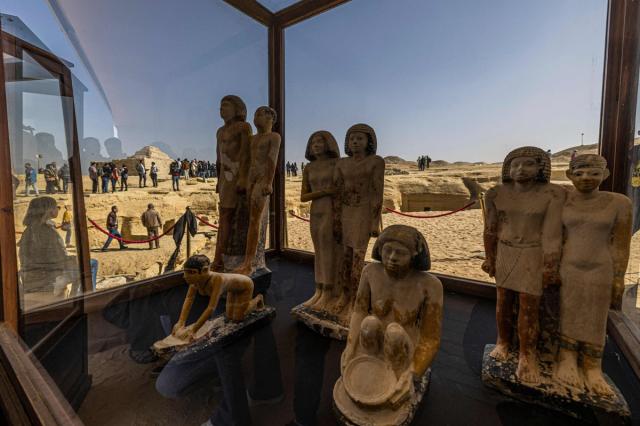
Egypt has produced numerous big archaeological discoveries in recent years in an effort to revitalize its tourism economy. Archaeologists made what they call a “dream discovery” on Thursday. This is a mummy that has laid undisturbed in a room for thousands of years.
The mummy was coated in gold leaf during excavation and is said to be one of the oldest and most complete non-royal bodies ever discovered in Egypt. The mummy is thought to be that of a man named Hekashepes. This gold-leaf-covered body had been placed inside a sarcophagus (a stone coffin) that had not been opened in 4,300 years.
These unique mummies have been discovered down a 15m (50ft) shaft in Saqqara, a burial site south of Cairo that has been active for over 3,000 years and is a UNESCO World Heritage Site. The site is located in Memphis, the ancient Egyptian capital, and has over a dozen pyramids, including the Step Pyramid.
Three other tombs were also found at the burial site
Several statues and pieces of pottery were unearthed inside the ancient necropolis’s discovered graves. The largest of the mummies is thought to be that of a guy named Khnumdjedef. Khnumdjedef was a cleric, inspector, and nobility supervisor. Meri was the owner of another mummy. Meri was a top palace officer who was given the title of “secret keeper”. The title gave him the authority to undertake particular religious rituals.
Fetek, a judge and writer, is buried in the other tomb. Former antiquities minister of Egypt, archaeologist Zahi Hawass, claimed that all of the discoveries date from the 25th to the 22nd century BC. “This discovery is very important because it connects the kings with the people living around them,” said Ali Abu Deshish, one of the researchers participating in the tomb excavation.
On Wednesday, scientists announced the discovery of a whole Roman residential city from the second and third century AD. Archaeologists discovered apartment complexes, towers, and “metal workshops.” It houses pots, Roman coins, and various utensils.
